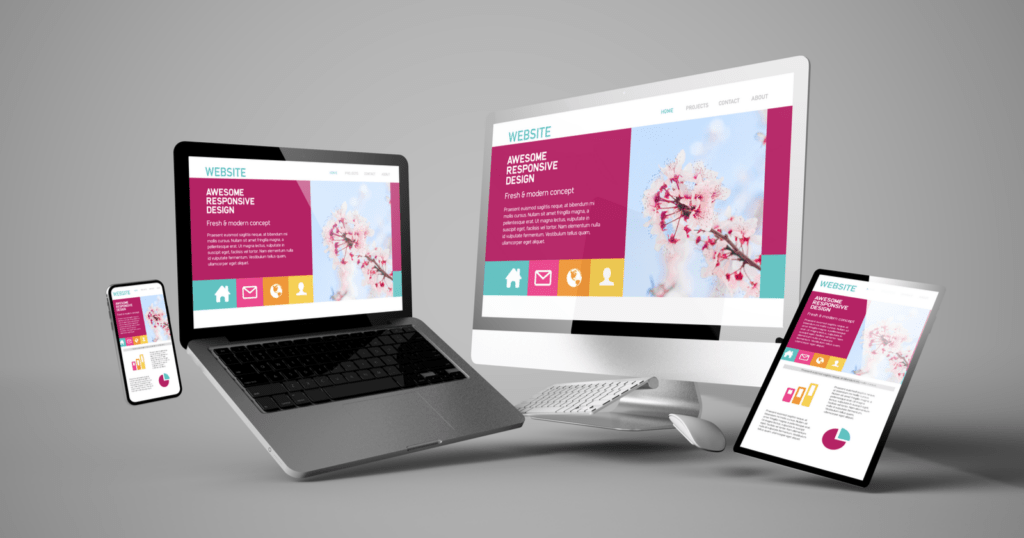Skilled Website Design Services to Develop a Stunning Online Presence
Wiki Article
Leading Tips for Developing an Impactful Website Style That Converts
In today's digital landscape, the importance of an impactful site design can not be overemphasized, especially when it concerns transforming visitors into customers. To attain this, one must take into consideration a range of aspects, consisting of recognizing the target audience, prioritizing customer experience, and optimizing for mobile systems. The calculated usage of compelling call-to-actions and a well-defined aesthetic pecking order plays an important function in leading individuals with their journey. As we check out these essential components, it becomes obvious that the success of your internet site pivots on even more than just aesthetic appeal; it calls for a thoughtful method to layout and functionality.
Understand Your Target Target Market
Understanding your target audience is fundamental to reliable website layout, as it lays the foundation for developing an engaging customer experience. Identifying who your customers are, including their demographics, choices, and habits, allows designers to tailor the website's web content, design, and functionality to meet particular requirements.Carrying out complete market study is important in this procedure. Studies, interviews, and analytics can give useful insights into user assumptions and pain factors. By assembling this information, developers can develop individual identities that represent different segments of the target market, making sure that style decisions are educated and pertinent.
Furthermore, recognizing the target audience assists in choosing proper layout components such as shade systems, typography, and imagery that reverberate with customers. A web site that speaks directly to its target market fosters a sense of link and count on, motivating longer visits and greater conversion rates.
Eventually, a user-centered strategy to web site layout not only enhances customer fulfillment yet additionally sustains service purposes by driving engagement and commitment. By focusing on the requirements and choices of the target audience, a site can effectively offer its purpose and accomplish desired end results.
Prioritize Customer Experience
To boost the overall efficiency of a site, focusing on user experience (UX) is necessary (Website Design). A properly designed UX ensures that visitors can navigate the site easily, find information swiftly, and involve with material meaningfully. This results in boosted customer contentment and higher conversion ratesBegin by implementing user-friendly navigating. Menus ought to be practically structured, allowing users to find key locations of the website with marginal effort. Consistency in style aspects, such as color pattern and font styles, fosters familiarity, which is essential for maintaining customer engagement.
In addition, think about the packing speed of your internet site. A hold-up of simply a few seconds can result in significant drop-offs, as users are less likely to await a slow-loading web page. Enhancing images and optimizing code can enhance efficiency and maintain site visitors.
By prioritizing user experience, you not only develop a much more enjoyable atmosphere for visitors but likewise enhance your brand's reputation. Ultimately, a focus on UX is a financial investment in go now the lasting success of your site.
Maximize for Mobile Tools
Enhancing for mobile phones is critical in today's digital landscape, where a boosting number of users gain access to web sites via smartphones and tablet computers. A mobile-friendly layout not only enhances user experience but additionally plays a substantial function in enhancing search engine rankings. To achieve this, visit it is vital to take on a receptive design that automatically adapts to different screen dimensions and orientations.
Filling speed is an additional important variable; mobile customers are commonly less patient and expect quick access to information. By prioritizing mobile optimization, you ensure that your web site continues to be competitive and properly engages a broader audience.
Usage Engaging Call-to-Actions
A site's efficiency typically depends upon its capacity to assist site visitors toward preferred actions, making compelling call-to-actions (CTAs) crucial parts of style. CTAs function as the pivotal points that guide individuals to involve with the website, whether that indicates making a purchase, registering for an e-newsletter, or downloading a source.To create effective CTAs, clearness is paramount. important source Use concise language that clearly communicates the activity you desire the individual to take.
Additionally, the design of CTAs must attract attention without being noticeable. Use contrasting shades and clear fonts to ensure they capture attention. In addition, take into consideration utilizing directional signs, such as arrowheads or images, to guide individuals towards these switches. By concentrating on these components, organizations can considerably improve user engagement, driving conversions and ultimately achieving their site's goals.
Concentrate On Visual Pecking Order
Effective web site design counts greatly on a well-structured aesthetic pecking order that guides users with content seamlessly. By arranging elements in a way that prioritizes details, developers can improve customer experience and assist in decision-making. This includes making use of dimension, shade, comparison, and spacing strategically to attract interest to one of the most important parts of a website.Making use of bigger font styles for headings and subheadings establishes a clear difference between various sections, permitting users to scan content effortlessly. In addition, employing different colors for buttons and calls-to-action can record individual attention and motivate communication. Whitespace is an additional important part; it protects against clutter and allows customers to concentrate on essential messages without distractions.
Images and graphics ought to match the message while likewise adhering to the recognized power structure, reinforcing the general message (Website Design). Consistency in design aspects, such as color plans and typography, additional enhances the aesthetic hierarchy, making navigating user-friendly

Verdict
In verdict, reliable internet site style demands a thorough understanding of the target market, prioritization of customer experience, and mobile optimization. The strategic use of compelling call-to-actions and a well-defined visual hierarchy better boosts customer engagement. By implementing these concepts, internet sites can attain higher conversion rates, guaranteeing that design components not just draw in site visitors yet additionally promote smooth navigation and interaction. Inevitably, a well-executed website style works as an important part in driving individual actions and achieving organization objectives.Report this wiki page